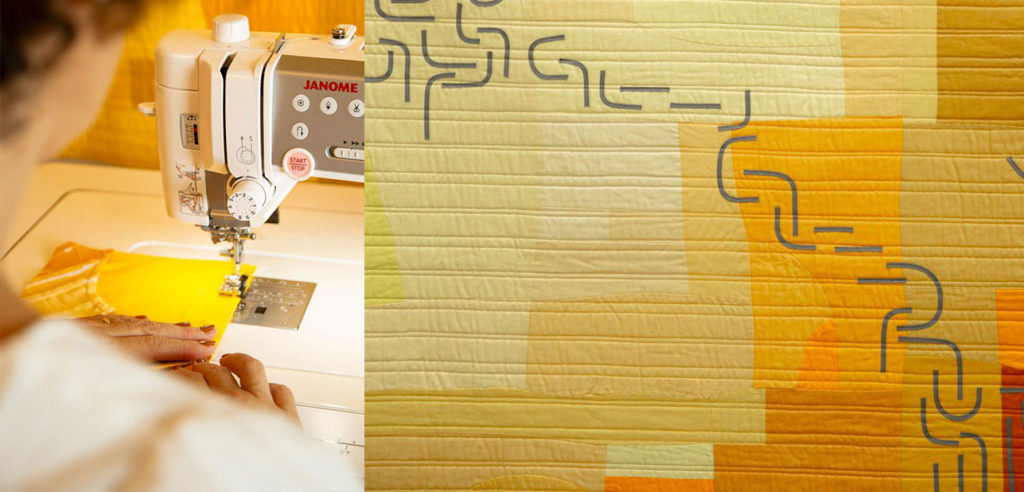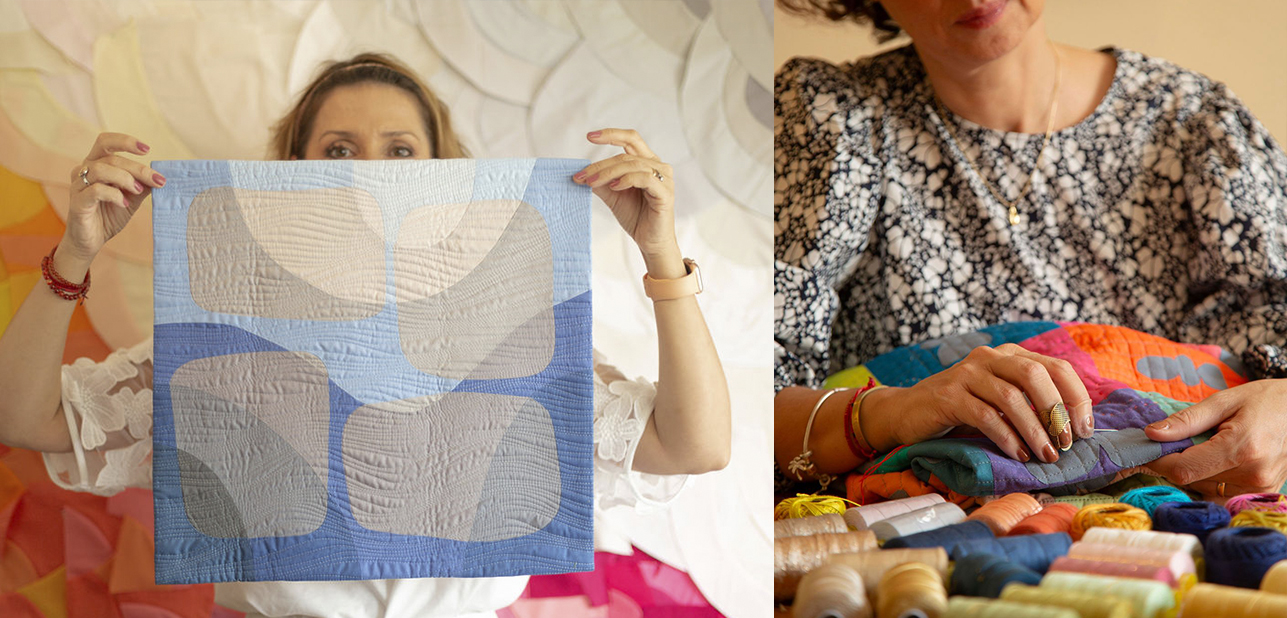Believe it or not – there are quilting techniques for everyone. Whether you’re drawn to the precision of geometric patterns or the freedom of free-motion quilting, you’ll find a world of creative possibility within these quilting techniques to hone your quilting skills. Let’s get stitching!
What is the Quilting Technique?
Quilting techniques describe the diverse methods to stitch together three layers: the quilt top, batting (insulation), and backing. This stitching, done by hand or machine, secures the layers, adds texture and visual interest, and enhances the quilt’s durability and beauty.



Traditional Quilting Techniques
Traditional quilting has been passed down through generations and continues to be cherished and practiced by contemporary quilters. Traditional quilting encompasses a variety of quilting techniques, including:
- Hand Quilting
Hand quilting, practiced for centuries, is considered the most traditional quilting technique. Hand quilting is a time-honored technique where the quilt layers (quilt top, batting, and backing fabric) are held together and stitched using a needle and thread.
Quilters use a variety of stitches, such as running stitch, rocking stitch, or stippling, to create decorative patterns that enhance the overall aesthetic of the quilt. Hand quilting requires skill and patience but adds a personal touch and unique texture to the finished quilt.

- Piecing
Piecing is a fundamental quilting technique that involves sewing together small pieces of fabric, known as patches or quilt blocks, to create a larger quilt top. Each patch is cut and sewn together with precision to form a desired pattern or design. This technique allows quilters to create unique and intricate designs by arranging different fabric colors, patterns, and shapes.
- Appliqué
Appliqué is the process of attaching pieces of fabric, often in various shapes and designs, onto a background fabric to create a decorative design on the quilt top. This technique offers versatility and allows quilters to add detailed motifs, floral patterns, or even pictorial scenes to their quilts. Appliqués can be sewn by hand or using a sewing machine.
- Binding
Binding is the final step in quilting, where a fabric edge is added to cover the raw edges of the quilt sandwich (quilt top, batting, and backing fabric). The binding can be made from matching or contrasting fabric and is folded, pressed, and sewn around the quilt’s perimeter.
This finishing touch not only gives the quilt a clean and polished look but also provides durability and helps to secure the quilt layers together. Check out some binding tutorials here.
- Wholecloth Quilting
Wholecloth quilting involves creating a quilt using a single piece of fabric as the quilt top, without any piecing. Quilters showcase their skills by quilting elaborate and intricate designs onto this single piece of fabric.
The quilting stitches, often done by hand, are the primary focus of this technique, allowing for intricate patterns, motifs, or even texture to be emphasized. Wholecloth quilts can be visually striking and are often seen as works of art.
- Tied Quilting
Tied quilting is a simple and traditional quilting technique that involves securing the layers of a quilt together by tying knots at regular intervals across the quilt’s surface. This method is particularly popular for quilts made with thicker or loftier batting, such as flannel or wool, as it allows the quilt to maintain its loftiness and provide extra warmth and coziness.
Tying the knots not only holds the layers together but also adds decorative elements to the quilt, allowing quilters to showcase their creativity by using various colors and types of thread. Tied quilting is an accessible and beginner-friendly technique that can be done by hand or using a sewing machine, providing a practical and charming way to finish a quilt.
Machine Quilting Techniques

If you’re looking for efficiency and a more modern aesthetic in your quilting techniques, machine quilting techniques are for you. Here are some of the machine quilting techniques:
Straight Line Quilting
This technique provides a sleek and contemporary look to any quilt and works beautifully with geometric patterns. You can easily achieve straight-line quilting using a walking foot on your sewing machine. This is the easiest type of quilting technique.
A walking foot helps to evenly feed the layers of your quilt (quilt top, batting, and backing) through the machine. This prevents any shifting or bunching of the fabric which makes for much more professional-looking results in your quilting techniques. Many quilting enthusiasts use a hera marker, which can be found at most quilting stores.
A hera marker gently scores the fabric, allowing you to mark your lines (for your straight-line quilting) without leaving permanent marks. It’s a great tool that can elevate your quilting techniques.
Free Motion Quilting
For those who want to add a more artistic flair to their quilting techniques, there’s free-motion quilting. This technique offers endless possibilities. It gives you the freedom to quilt in any direction you desire as if you’re drawing with a sewing machine.
To start free-motion quilting, you’ll need a darning foot for your sewing machine, and you will need to drop or cover your feed dogs. You’ll be guiding the fabric with your hands, so take your time and practice.



Carolina Onetto is known for her modern art quilts, which beautifully showcase the versatility and creativity of free-motion quilting. Her unique approach to this technique allows for the creation of captivating, contemporary designs that blur the lines between quilting and fine art.
If you’re looking to explore the intersection of quilting and modern artistic expression, Carolina’s innovative quilting works and expertise in free-motion quilting are a valuable source of inspiration.
Computerized Quilting
Computerized quilting involves using a longarm quilting machine equipped with a computerized system to quilt intricate patterns with precision and accuracy. This modern technique allows quilters to select from a wide range of digital quilt patterns and designs, ensuring precise stitching and consistent design placement throughout the quilt.
With the ability to customize settings and upload custom designs, computerized quilting offers efficiency and time-saving benefits. It also provides a professional-looking finish that showcases the artistry of quilting in a modern and innovative way.
Computer programs for designing quilts have also become a way for people to efficiently design quilt patterns.
Explore Quilting Techniques Today
The beauty of quilting techniques is their diversity. With a range of options suitable for various skill levels, quilting techniques are easily accessible no matter your expertise.
Ready to try quilting techniques? Carolina Oneto offers online quilting courses, lectures & workshops, and tutorials to hone your quilting skills. Check our upcoming live and online events as well to learn more about quilting.
Let’s get stitching and explore quilting techniques today! For more information, feel free to reach out to us or browse through our blog for quilting inspiration.


